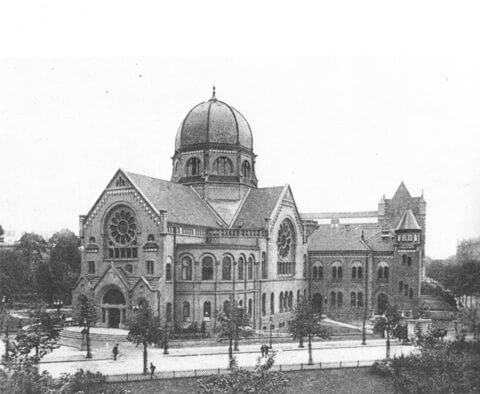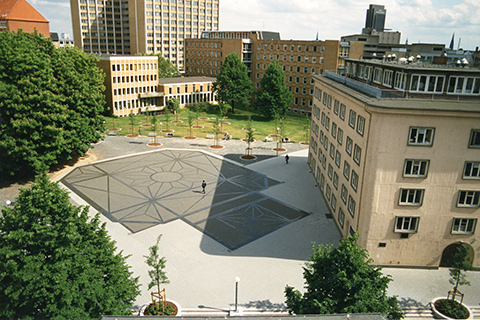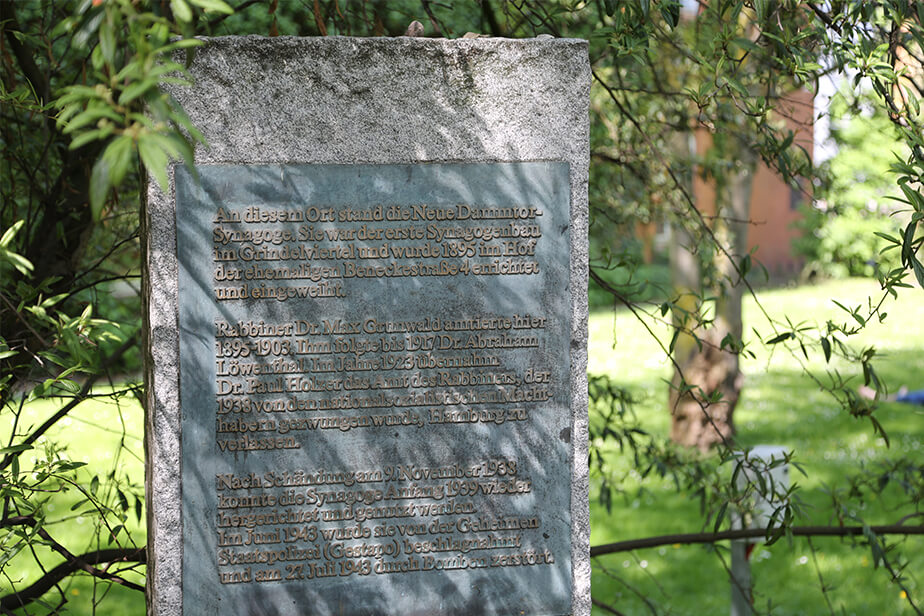New Dammtor Synagogue
The New Dammtor Synagogue Jewish life in the Grindelviertel
The Grindelviertel neighborhood surrounding today’s campus was the center of Jewish life in Hamburg. There were two synagogues in the immediate vicinity: the Bornplatz Synagogue and the New Dammtor Synagogue. Roughly 25,000 members of the Jewish community lived the area; there was also a Jewish cemetery. The Talmud-Tora School right next to the campus has once again opened its doors.
As more and more Jewish moved to Harvestehude, Rotherbaum, and Eppendorf between 1870 and 1930, a lively Jewish culture took root in the Grindelviertel.
The New Dammtor Synagogue was built in the neo-Islamic style in 1894/95 according to designs by the architects Schlepps & Rzekonski. It was tucked behind the Gründerzeit apartment buildings on today’s Allende-Platz and completely hidden from sight. During the November Pogrom in 1938, the interior was destroyed. It was rebuilt using private funds and once again used for services.
In June 1943, the National Socialists confiscated the synagogue. Shortly thereafter, the building was destroyed in the bombing of Hamburg. The memorial to the New Dammtor Synagogue was erected in 1995.

Main synagogue at Bornplatz
Hamburg’s main synagogue at Bornplatz was consecrated in 1906. It was the first synagogue in Hamburg openly facing a public street. It seated 1,200 and boasted a cupola that reached 40 meters in height. The synagogue was laid to waste in the November Pogrom in 1938. In spring 1939, the Jewish community was forced to sell the property to the City of Hamburg for far below its market value.
Ultimately, in 1939, the synagogue was torn down. The Jewish community was forced to pay the costs for its demolition.

Platz der jüdischen Deportierten—remembering the deportation of Hamburg’s Jewish population
Another place that connects Jewish history and Universität Hamburg is the Platz der jüdischen Deportierten at Moorweidenstraße next to the West Wing of the Main Building. It is a small but easily visible grove in the middle of Hamburg. Deportations to ghettos and concentration camps began on 25 October 1941.
Today, Jewish life is reinvigorating the district. Today, there are roughly 4,000 Jewish residents of the neighborhood around the Von-Melle-Park Campus. In addition to the synagogue on Hohe Weide street, there is also a primary school, the Talmud-Tora School, and cafés serving kosher food.


